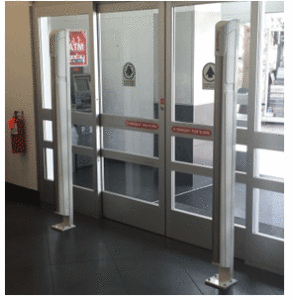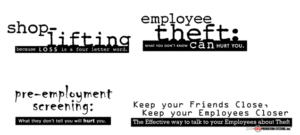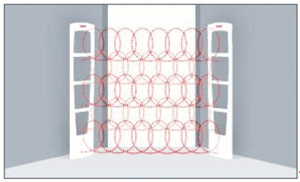When dealing with a shoplifter, your employees are at risk of violence. Knowing the company’s policies on how to approach and deal with a shoplifter must be known by every employee in your company. A loss prevention training seminar that will help your employees or your loss prevention team deal with such situations is imperative for your business. Safety is always the most important issue when dealing with a shoplifter, and your employees should know this fact. A law suit that can cost your business millions of dollars is not something you can afford to have. Call us, we will walk you though our programs and find the one that meets your need.
For more about shoplifting news, follow the links below.
$20 million lawsuit filed against Arundel Mills security
The family of a suspected shoplifter who drowned in 2014 near Arundel Mills mall has filed a $20 million lawsuit against the shopping center’s security staff for allegedly chasing him to his death.
The family of Tavon Talley filed the lawsuit against Valor Security Services and Mydatt Services in Baltimore City Circuit Court in February. A judge has denied a motion by the defendants to transfer the case to Anne Arundel Circuit Court and allowed the dispute to move forward to trial.
As of Friday, a trial date had yet to be scheduled, according to online court records.
Reached by phone Friday afternoon, Thomas P. Bernier, the Baltimore attorney representing Valor Security and Mydatt Services, declined to comment citing the ongoing litigation.
A spokesman for Mydatt Services, Valor Security’s parent company, did not immediately return a call for comment.
According to the complaint, on July 7, 2014, Talley was at the Zumiez store, which sells skate and snowboarding equipment, when a manager came to suspect the 26-year-old of shoplifting.
Connecticut’s Facial Recognition Bill: A Model for States?
State legislators step back from a bill that would limit such technology and instead take a reasonable approach — that should serve as a model for state legislators considering regulation for other emerging technologies.
Earlier this year, the Connecticut General Assembly was considering a bill that would prohibit the use of facial recognition technology for commercial applications unless companies got prior consent from consumers to gather that information — a move that would have severely curtailed the deployment of the technology. Fortunately, state lawmakers listened to reason and revised the bill so that it now simply requires retailers to display signs indicating that their establishments use facial recognition. This type of reasonable approach to regulating new technology should serve as a model for state legislators considering regulation for other emerging technologies.
Facial recognition is a form of automated image recognition that uses computer algorithms to uniquely identify an individual in a database based on a photo. Concerned with the growing accuracy of the technology, some privacy advocates have argued that facial recognition is a threat to privacy and public anonymity and have recommended the government impose restrictions on both public– andprivate-sector uses of it.
Police: Long Island Macy’s Loss Prevention Employee Steals $69,000 In Perfume
MANHASSET, N.Y. (CBSNewYork) — Police said a trusted security guard in charge of theft prevention at a Long Island Macy’s used his position to steal.
As CBS2’s Jennifer McLogan reported, Juan Adriano Infante, 21 allegedly got away with $69,000 worth of Chanel perfume.
The Morrow family, who are loyal customers at Macy’s of Manhasset, were disappointed to learn of the heist of products from Chanel – their favorite fragrance.
“He was security and he was stealing?” Ms. Morrow said.
Police and prosecutors said Infante, the loss prevention associate for Macy’s, entered the stockroom where the high-end perfume is kept in storage. Police alleged that Infante carried box after box out of a side exit – making off with 1,000 expensive bottles of perfume.
It happened after he mysteriously disabled the alarm, police said.
“He would actually call the fire alarm company; have them disengage the fire alarm. At that point, he would walk out of the store – the side exit; put these fragrances in his car,” said Nassau County police Detective Lt. Richard Lebrun.

 What is the solution to shoplifting and employee theft?
What is the solution to shoplifting and employee theft? Do you REALLY know how to stop shoplifters? I mean, really know? Your Checkpoint System is only half of the strategy. You spent the money, put the labor/time into using labels and tags but after the newness wears off, are you still having more losses than you want?
Do you REALLY know how to stop shoplifters? I mean, really know? Your Checkpoint System is only half of the strategy. You spent the money, put the labor/time into using labels and tags but after the newness wears off, are you still having more losses than you want?
 There’s been some news swirling around the LP world for a few weeks now about California and some new laws that the state has passed. Basically, the state raised the threshold for a felony theft to $950. The article hinted that shoplifting has increased in the major retail stores and calls for shoplifting cases have increased by 25% to the LAPD. The article blamed the new legislation for this. Here’s a link to that article if you’d like to read it. (
There’s been some news swirling around the LP world for a few weeks now about California and some new laws that the state has passed. Basically, the state raised the threshold for a felony theft to $950. The article hinted that shoplifting has increased in the major retail stores and calls for shoplifting cases have increased by 25% to the LAPD. The article blamed the new legislation for this. Here’s a link to that article if you’d like to read it. ( It’s no big secret that I can’t stand a thief; I did make a career out of catching them. Shoplifters really get under my skin, but employee theft really fires me up. You put people to work, give them opportunity to grow and instead of putting in the long hours, hard work and dedication needed to move forward, they steal from you. They betray your trust, slap you in the face and take money out of your pocket and food off your family’s table. Will you ever stop employee theft completely? Probably not. You can, however, minimize the risk.
It’s no big secret that I can’t stand a thief; I did make a career out of catching them. Shoplifters really get under my skin, but employee theft really fires me up. You put people to work, give them opportunity to grow and instead of putting in the long hours, hard work and dedication needed to move forward, they steal from you. They betray your trust, slap you in the face and take money out of your pocket and food off your family’s table. Will you ever stop employee theft completely? Probably not. You can, however, minimize the risk.
 My grandparents owned a small hardware store back in the late 1950s. Back then, when my grandpa left at 5pm, he simply locked the back door, gathered his belongings and left, locking the double glass front door behind him with nothing more than a standard lock that you’d find on any home at the time. The front of the store was nothing but glass. He had cash and at least $100k worth of merchandise on the shelves. Wouldn’t it be nice if things could go back to the way they were back then? Could you imagine if you left your store this soft nowadays? Burglaries happen, and they happen often. Over the past ten years as a Regional LP manager for my company, I’ve had it happen a total of 12 times. About once a year, or so, someone, somewhere across my region, breaks into one of my stores; or at least tries to do so. We have a lot of things that we implement to prevent this from happening, so when someone is able to breach our perimeter, it’s usually caused by human error.
My grandparents owned a small hardware store back in the late 1950s. Back then, when my grandpa left at 5pm, he simply locked the back door, gathered his belongings and left, locking the double glass front door behind him with nothing more than a standard lock that you’d find on any home at the time. The front of the store was nothing but glass. He had cash and at least $100k worth of merchandise on the shelves. Wouldn’t it be nice if things could go back to the way they were back then? Could you imagine if you left your store this soft nowadays? Burglaries happen, and they happen often. Over the past ten years as a Regional LP manager for my company, I’ve had it happen a total of 12 times. About once a year, or so, someone, somewhere across my region, breaks into one of my stores; or at least tries to do so. We have a lot of things that we implement to prevent this from happening, so when someone is able to breach our perimeter, it’s usually caused by human error. EAS is great isn’t it? For the most part, if someone is stealing product “X,” you slap on a quick tag or label and you see a pretty substantial reduction in shrink (for the most part.… Live in the real world). As my LP career has progressed over the years, I’ve seen EAS change drastically. I’ve also seen what retailers apply EAS tags to change as well. Often times, I scratch my head in disbelief at the ideas that come out sometimes and others, I pull my hair out because we could have been more proactive with tag placement. I’ve also seen some fantastic ideas from my store teams on some not so standard tagging procedures.
EAS is great isn’t it? For the most part, if someone is stealing product “X,” you slap on a quick tag or label and you see a pretty substantial reduction in shrink (for the most part.… Live in the real world). As my LP career has progressed over the years, I’ve seen EAS change drastically. I’ve also seen what retailers apply EAS tags to change as well. Often times, I scratch my head in disbelief at the ideas that come out sometimes and others, I pull my hair out because we could have been more proactive with tag placement. I’ve also seen some fantastic ideas from my store teams on some not so standard tagging procedures.